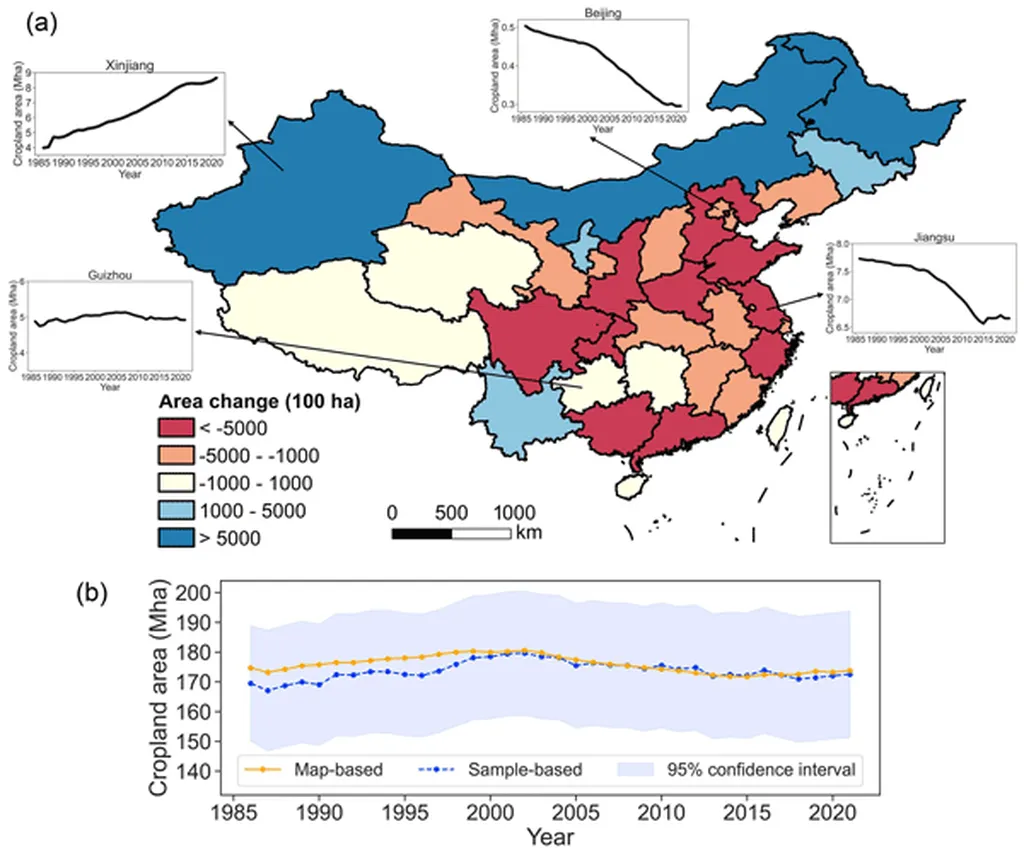In the ever-evolving landscape of agricultural technology, a groundbreaking development has emerged from the Aerospace Information Research Institute of the Chinese Academy of Sciences. Led by Jian Yan, a team of researchers has introduced CropSTS, a novel remote sensing foundation model designed to revolutionize cropland classification. This innovation addresses longstanding challenges in the field, promising significant advancements for both agricultural and energy sectors.
CropSTS stands out by tackling the complexities of fine-grained cropland classification, an area where existing geospatial foundation models (GFMs) have historically struggled. The model’s unique decoupled temporal–spatial attention architecture is specifically tailored to capture the temporal dynamics of cropland remote sensing data. This means it can more accurately identify and classify different types of croplands, even when field boundaries are ambiguous.
“Existing models often fall short in efficiently modeling temporal data and adapting to different regions,” explains Jian Yan. “CropSTS addresses these issues by optimizing the temporal encoding process and leveraging cross-modal knowledge transfer.”
The researchers employed a hybrid framework for pre-training the model, combining joint-embedding predictive architecture with knowledge distillation from web-scale foundation models. This approach allows CropSTS to achieve state-of-the-art performance on the PASTIS-R benchmark, despite being trained on a relatively small dataset and using a compact model.
The implications of this research are far-reaching. For the energy sector, accurate cropland classification is crucial for bioenergy production, land-use planning, and carbon sequestration efforts. By providing more precise and reliable data, CropSTS can enhance decision-making processes, leading to more efficient and sustainable practices.
Moreover, the model’s ability to adapt to different regions and efficiently model temporal data opens up new possibilities for global agricultural monitoring. This could lead to improved crop yield predictions, better resource management, and more effective responses to climate change.
Published in the journal ‘Remote Sensing’—translated from its original Chinese title as ‘Remote Sensing Technology and Application’—this research marks a significant step forward in the field of agricultural remote sensing. As the world grapples with the challenges of feeding a growing population and transitioning to sustainable energy sources, innovations like CropSTS offer a beacon of hope.
The future of agricultural technology is bright, and with continued advancements in remote sensing and machine learning, we can expect even more breakthroughs on the horizon. As Jian Yan and his team continue to refine and expand the capabilities of CropSTS, the potential for transformative impact on both the agricultural and energy sectors grows ever greater.

